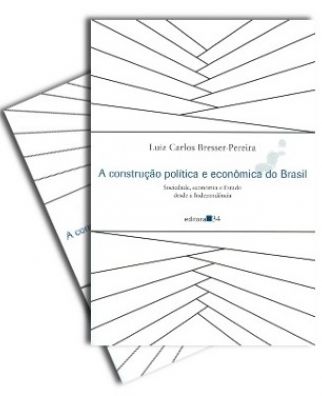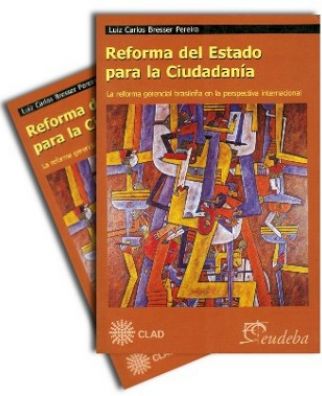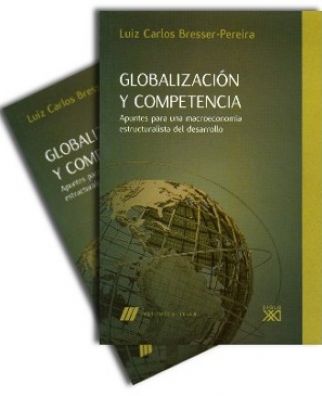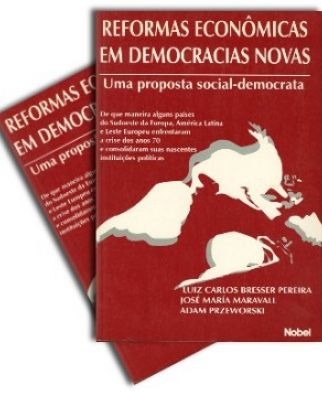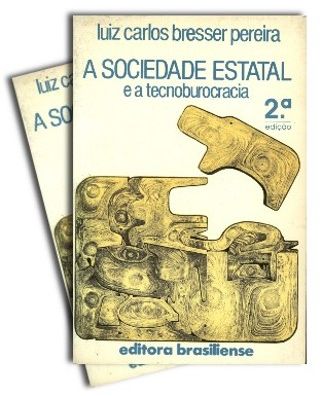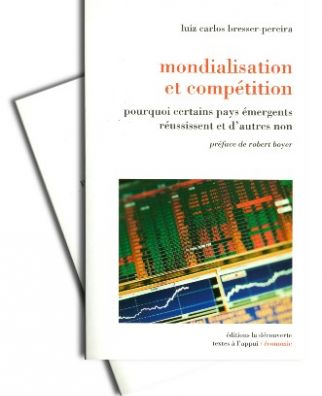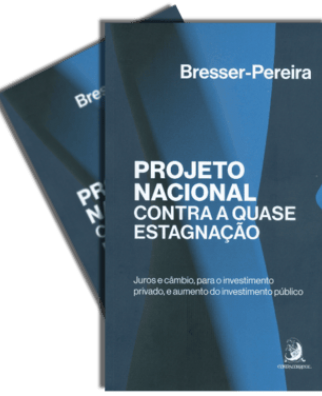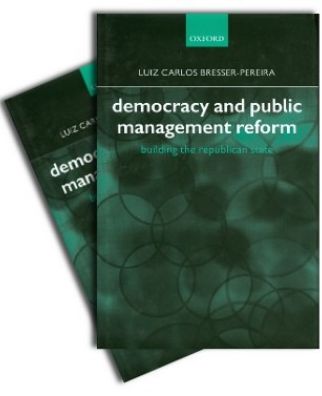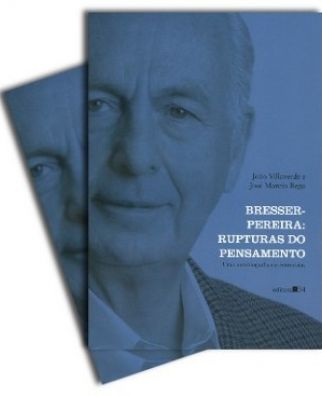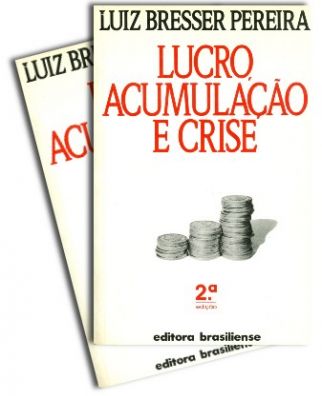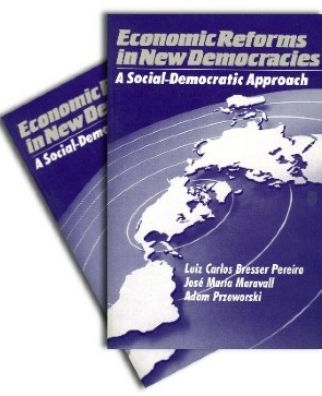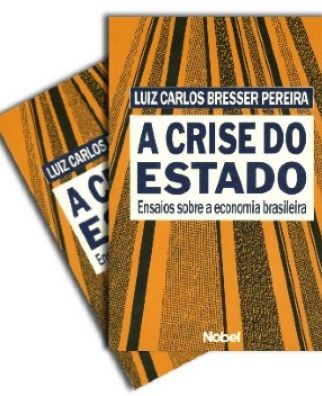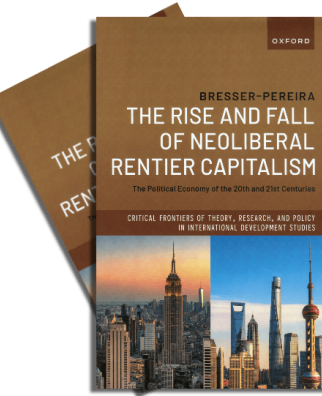1983. With Yoshiaki Nakano. The founding paper on the theory of inertial inflation. One must distinguish the accelerating from the maintaining and the sanctioning factors of inflation. English version available. (Paper: Anais do X Encontro Nacional de Economia da ANPEC, December 1983.
OTHER TYPES OF WORKS
ACADEMIC PAPERS
1983. With Yoshiaki Nakano. The founding paper on the theory of inertial inflation. One must distinguish the accelerating from the maintaining and the sanctioning factors of inflation. (Portuguese version available)
1983 [1984]. A survey of the 1970s and an analysis of the causes of the crisis beginning in 1981: reversion of the economic cycle as consequence of overaccumulation, and the debt crisis. Portuguese version available. (Chapter 8 of Development and Crisis in Brazil: 1930-1983)
1983. A survey of the 1970s and an analysis of the causes of the crisis beginning in 1981: reversion of the economic cycle as consequence of overaccumulation, and the debt crisis. English version available. (Paper: Revista de Economia Política)
1983. New historical facts demand new interpretations. Brazil is not anymore a underdeveloped country, multinationals are not the cause of underdevelopment, the bourgeoisie is not authoritarian, technobureaurcrats are not mere staff to the businessmen, income does not necessarily concentrate.(Paper: Novos Estudos Cebrap)
1983. A 'abertura' is a strategy through which the military try to procrastinate the democratization demanded by civil society. (Paper: Revista de Administração de Empresas)
1982. In the modern technobureaucratic-capitalist state, market and state coordination of the economy are intrinsically connected. In economic terms the state is producer, income distributor, and coordinator.(Paper: Revista de Economia Política)
1982. Paper on the Solidarinosc revolution in Poland written after a visit to the country. The perspective of self-management after statist domination. (Paper: Revista de Administração de Empresas)
1982 (1984). An overview of the political and economic interpretations of Brazil before and after 1964. The two interpretations of Brazil before 1964 (agrarian vocation and national-bourgeois) and the four after 1964 (imperialist, functional-capitalist, dependency, and authoritarian modernization). Portuguese version available. (Paper: Latin American Perspectives).
1982. An overview of the political and economic interpretations of Brazil before and after 1964. The two interpretations of Brazil before 1964 (agrarian vocation and national-bourgeois) and the four after 1964 (imperialist, functional-capitalist, dependency, and authoritarian modernization). English version available. (Paper: Dados)*
1981. A sistematic analysis on social classes in contemporary capitalism distinguishing social classes from social strata and showing how the two concepts are interconected. English version available. (Paper: published only in this site)
1981. A systematic analysis of social classes in contemporary capitalism distinguishes social classes from social strata and shows how the two concepts are interconnected. Portuguese version available. (Paper: published only in this site)
1981 This paper explains stagflation with the administrative or cost theory of inflation emphasizing money endogeneity. This paper contains my first vision of inertial inflation: in one of the sessions I explain high inflation by the fact that firms A, B, and C index their princes increasing them according to the going rate of inflation in a staggered way. (Paper: Revista de Economia Política) *
1980. Brazilian inflation is consequence of distributive conflict involving the transference of income from the poor to the rich. Monopolist and monopsonist power facilitates such transference. (Paper: Encontros com a Civilização Brasileira)
1979. A comparison between relatively socialist China and technobureaucratic URSS after a visit to these two countries. (Paper: Cadernos de Opinião)
1978. Multinational entreprises involve a new form of dependency, requiring carefull scrutiny. Brazil does not need so much of capital as it is said. The Brazilian bourgeoisie is associated to multinationals, but the state's technobureaucracy is not, and may be a source of national autonomy. (Paper: Encontros com a Civilização Brasileira)*
1978. Since 1974 the relative economic surplus (profits+salaries/wages) stops to increase. This has consequences on macroeconomic stability. (Paper: Estudos Econômicos)
1978. Multinational enterprises contribute to economic development but are cause of income concentration.(Paper: Revue Tiers Monde)
1978. Family planning programs are only effective when they strategically fill up the 'knowledge gap' that occurs when families are already urban, but did not realize that their interests in limiting childre changed. (Revista de Administração de Empresas)



